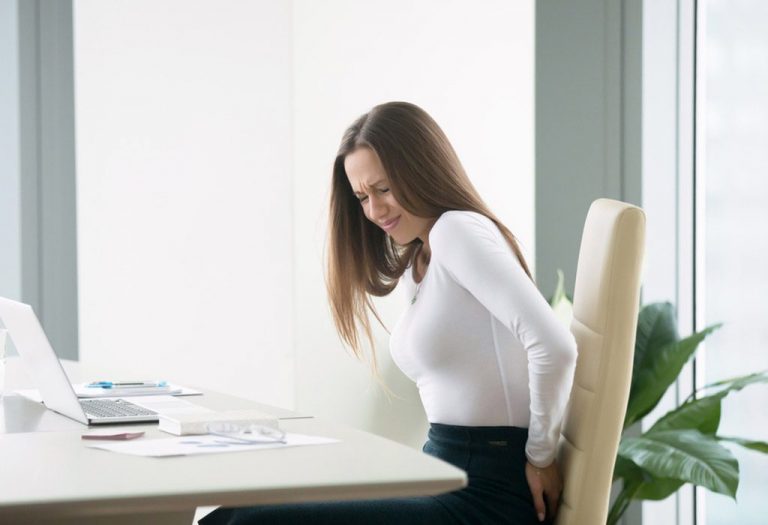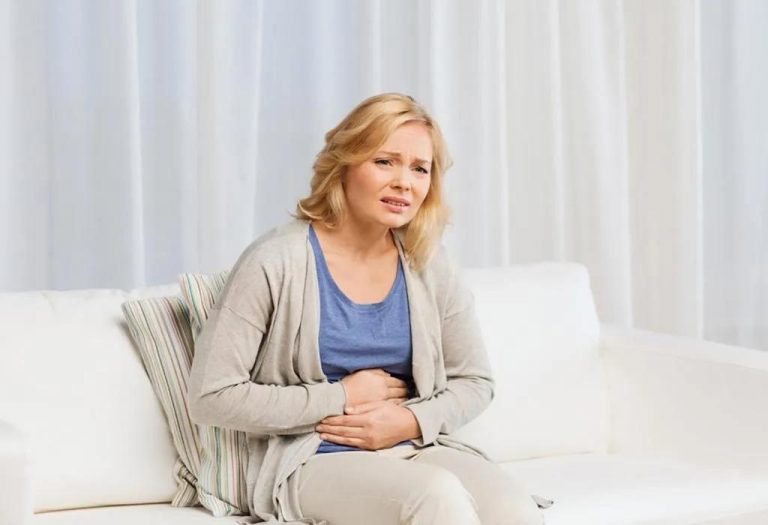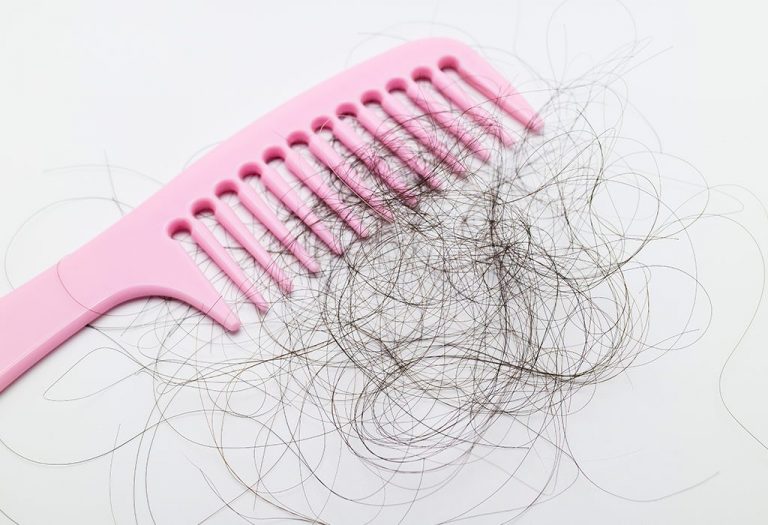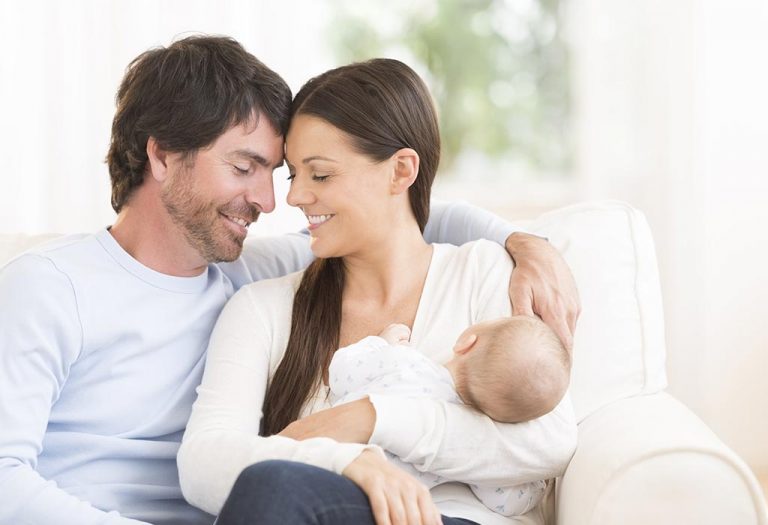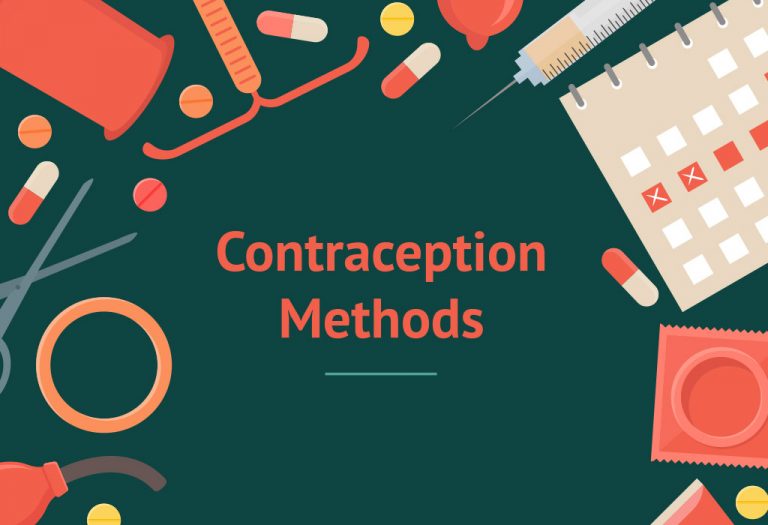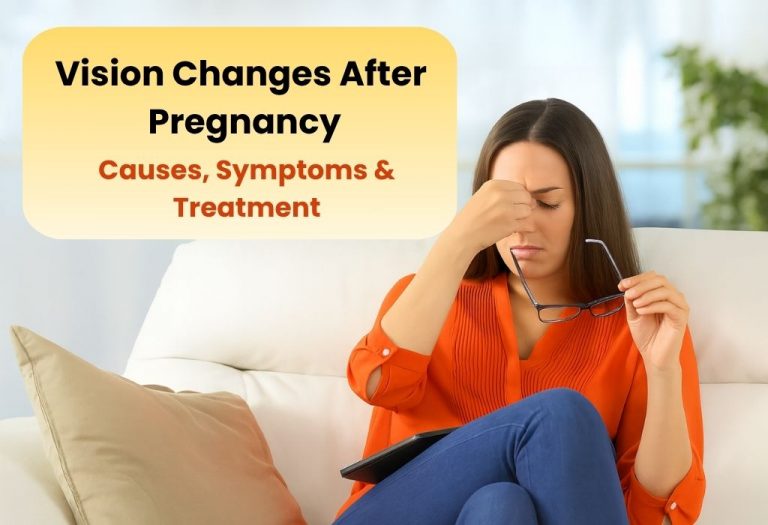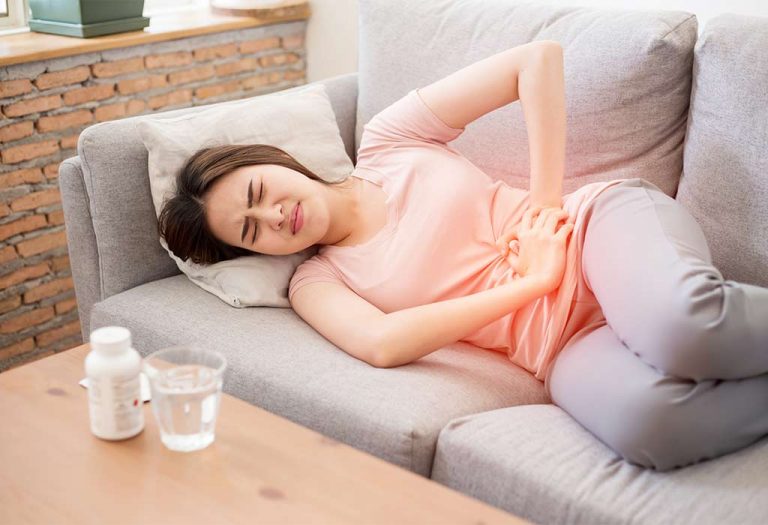Hemorrhoids Post Pregnancy: Causes, Symptoms, and Treatments
Pregnancy can change your body in more than one way than you could think. If you believe your ordeal will end after the baby is born, there is more to the story. Of course, your baby will be your priority, but caring for your body is also essential. There are many cases where vaginal delivery can lead to haemorrhoids or piles after giving birth. Several women experience swollen veins in the rectum during pregnancy or while giving birth, and it is common (1). Hemorrhoids post-pregnancy can be painful and irritating, especially while taking care of your baby. Let’s learn more about the relationship between childbirth and hemorrhoids and well as discuss ways to treat and prevent piles after childbirth.
What Are Hemorrhoids?
A 2015 study published in the World Journal of Gastroenterology defines haemorrhoids as the symptomatic enlargement and/or distal displacement of anal cushions (2). Postpartum haemorrhoids are complications that could develop after childbirth. The swollen veins in the rectal area are haemorrhoids (3). They have an unusual swelling and lump together as a single mass. You could find them protruding from the anus. Haemorrhoids can cause extreme itching or pain. They could cause rectal bleeding when you experience bowel movements.
The size of haemorrhoids can be as tiny as a groundnut or can grow up to the size of a grape. While haemorrhoids developed during pregnancy will ease out after delivery, sometimes they may persist for a long time after the baby is delivered.
What Causes Piles After Pregnancy
One can get haemorrhoids post pregnancy due to various reasons:
- During pregnancy, there is an increase in progesterone in the body, which relaxes the vein walls and leads to swelling of these veins easily.
- Progesterone is also responsible for constipation since it slows down the intestinal tract.
- During constipation, you tend to strain during a hard bowel movement. This chronic straining can cause or worsen piles after pregnancy (4).
- As the size of the uterus grows, the pelvic veins and inferior vena cava are pressurised. The inferior vena cava is a large vein that gets blood from the lower portion of our body. The veins below the uterus are put under pressure and get enlarged.
- Haemorrhoids can also be developed due to the extreme pushing at the time of delivery.
Signs and Symptoms of Postpartum Hemorrhoids
- Haemorrhoids after pregnancy announce their arrival through itching and a hot and burning feeling in the anus. This pain increases during bowel movements (5).
- You may feel an increased level of pain as days go by, especially while in a sitting position. During this time, the anal pain moves from infrequent to constant.
- A feeling of insufficient rectal expulsion followed by burning and itching is a major symptom of chronic haemorrhoids.
- Inflammation of tissues around the rectum, the formation of cracks and bleeding are signs of further complications.
How Long Do Hemorrhoids After Pregnancy Last?
Postpartum haemorrhoids can appear quite large right after childbirth, but they tend to decrease significantly in size within a few days or weeks (6). They are usually most painful for up to five days postpartum but show noticeable improvement by two weeks after delivery. While some postpartum haemorrhoids may persist longer and need treatment from your healthcare provider, the majority resolve naturally within six to 12 weeks post-delivery. That said, some women may develop skin tags afterwards. This occurs when the blood in the haemorrhoid is reabsorbed by the body while the skin remains stretched.
Diagnosis
To diagnose the disease, a simple and quick check-up of the anus is required. External haemorrhoids are in the form of circular pea-like sections and can be identified easily. For internal haemorrhoids, a manual check-up is required to determine their size and quantity. An endoscopic test (sigmoidoscopy) and a radiological test (irrigoscopy) may be required in certain cases too.
Complications
In rare cases, one can experience complications due to haemorrhoids. The most common ones are:
- There are certain hygiene-related problems that can be caused due to haemorrhoids. After defecation, it can become difficult to clean the anal area.
- Poor hygiene around the anus for long periods of time can lead to various other infections.
- Bleeding can be worrying, but it rarely leads to any major complications
- Pain, especially during defecation, is a common complaint when one has haemorrhoids
Treatment & Medication for Post-Pregnancy Piles
There are several postpartum hemorrhoids treatment options that you can adopt after consulting with your doctor. Over-the-counter medication is also available for relief from piles and anal trauma.
1. Oral Pain Relievers
Oral pain relievers are commonly used as a remedy for piles after delivery. These include ibuprofen, aspirin or acetaminophen. The discomfort of postpartum piles is greatly relieved through this.
2. Hemorrhoid Creams
Creams provide a lot of relief from pain, itching and bleeding. Depending on your symptoms, choose the right cream for quick relief. Creams containing hydrocortisone help to relieve itching, while pramoxine and benzocaine are effective against soreness and pain (7).
3. Osmotic Agents or Stool Softeners
Stool softeners are a great way to keep the stools soft. This reduces the chances of constipation and prevents straining, too (8).
4. Lubricant Laxatives
Lubricant laxatives like mineral oil are used as a mode of treatment for post-pregnancy piles. They help maintain and retain the water content in the intestines and stool. Since the stool softens, it passes through the intestines easily.
5. Bulk Forming Agents
Bulk-forming agents are laxatives that soften the stools and facilitate easy bowel movements. These agents are derived from natural and synthetic sources and act within 12 to 36 hours of ingesting them.
6. Probiotics
Probiotics are friendly or beneficial bacteria that promote digestive health. Yogurt is a powerful food when one has haemorrhoids since it contains live active cultures. Kefir, which is a yoghurt-like beverage, stimulates bowel movements and lessens dehydration to a great extent.
Tips to Treat Hemorrhoids at Home
If you prefer home treatments and are searching for natural remedies for haemorrhoids after pregnancy, read ahead for a few powerful ones:
- Ice Pack: Apply an ice pack on the perineum or infected area for a quick cure (9). Ensure the ice pack has a soft covering. A cold compress soaked in witch hazel is also an effective technique for reducing inflammation and pain.
- Goat Milk: Mix 10 grams of ground mustard with 10 tablespoons of goat milk. Mix it properly and drink it before breakfast. You will find a significant change in the inflammation and pain caused by your condition.
- Turmeric: This natural ingredient is known for its antibiotic properties and can be used to heal haemorrhoids. Mix turmeric with mustard oil and a bit of onion juice. Apply this paste to the infected areas for immediate relief.
- Onions: Take one piece of red onion and chop it finely. Add sugar to it and consume this mixture twice a day to reduce nerve irritation. The bleeding will reduce, and so will the irritation.
- Pomegranate Peel: Crush pomegranate peel to fill a small cup and add hot water to it. Allow the mixture to cool down, and drink it twice a day for relief from haemorrhoids.
- Black Mustard and Yoghurt: Ground a spoonful of black mustard and add it to a cup of fresh yoghurt. Consume this before breakfast and drink some buttermilk after it. This treatment is ideal for mothers who are breastfeeding.
- Ginger: A combination of ginger, mint and fresh lemon juice can be consumed daily for great relief from postpartum haemorrhoids. Add a little honey to the mixture to make it more effective.
- Sitz Bath: A Sitz bath is often considered the best remedy for hemorrhoids after pregnancy. It is a small plastic basin that can be placed over the toilet seat. Pour warm water in it and soak the rectal area for 10 minutes 3-4 times daily. This will ease a lot of pain and discomfort caused by haemorrhoids.
How to Speed Up the Healing Process?
To hasten the healing process and to prevent the growth of haemorrhoids in the future, it is important to keep constipation at bay. The following habits can help you heal hemorrhoids after childbirth (10):
- Drink at least eight to ten glasses of water every day to avoid constipation.
- Eat a lot of fruits, vegetables, beans and whole grains that provide a lot of fibre (6).
- Kegel exercises help in improving circulation in the rectal area. They strengthen the anal muscles and lessen the scope of developing haemorrhoids. Kegel exercises are useful for strengthening the area near the urethra and vagina, which eases recovery post-delivery.
- Add an exercise regime to your daily schedule by taking a brisk walk every day.
- Use the bathroom whenever you feel the need for a bowel movement. Holding it will make it difficult to pass as the stool will get drier.
- Do not prolong your sitting time on the toilet seat for more than required. This will put a lot of strain on surrounding areas.
Prevention
Prevention of haemorrhoids is an easy process that can be easily integrated into everyday life. Various steps to prevent its occurrence have to be taken during and after pregnancy.
- Maintain an active lifestyle before, during and after pregnancy.
- Doing pelvic muscle exercises strengthens the area and improves blood circulation.
- Preventing constipation and subsequent straining during bowel movements is an important step towards keeping haemorrhoids at bay.
- Drinks plenty of water
When to Call a Doctor
Speak to your doctor immediately if you notice any rectal bleeding. If your homecare results have not yielded any results, it is time to speak to a professional. Hardening of the haemorrhoids and increasing pain are also indicators of needing medical intervention. There could be a blood clot inside, which may require a small procedure for removal.
FAQs
1. Do postpartum haemorrhoids resolve on their own?
In most cases, postpartum haemorrhoids resolve on their own within a few days. Making changes in dietary choices and using home remedies can speed up the healing process.
2. What are the important things to do when you are having postpartum haemorrhoids?
When experiencing postpartum haemorrhoids, make sure to always keep your perineum area clean and dry. Try to gently push your haemorrhoid after c-section or vaginal delivery back inside. Always sit on the cushion, rocking chair, or recliner with soft bedding to relieve pressure on the rectum. Do kegel exercises without a miss. Also, do not strain or push – this will worsen piles.
Postpartum haemorrhoids are not life-threatening but can cause pain and discomfort. However, it can be prevented and controlled by maintaining an active lifestyle and natural remedies coupled with medications can help overcome this condition.
References/Resources:
1. Poskus. T, et al.; Haemorrhoids and anal fissures during pregnancy and after childbirth: a prospective cohort study; BJOG.; PubMed; https://pubmed.ncbi.nlm.nih.gov/24810254/; December 2014
2. Lohsiriwat. V; Treatment of hemorrhoids: A coloproctologist’s view; World J Gastroenterol.; PubMed Central; https://pmc.ncbi.nlm.nih.gov/articles/PMC4541377/; August 2015
3. Constipation; URMC; https://www.urmc.rochester.edu/ob-gyn/obstetrics/after-delivery/common-conditions
4. Constipation; Mayo Clinic; https://www.mayoclinic.org/diseases-conditions/constipation/symptoms-causes/syc-20354253
5. Hemorrhoids; Mayo Clinic; https://www.mayoclinic.org/diseases-conditions/hemorrhoids/symptoms-causes/syc-20360268
6. Your body after the birth; NHS; https://www.nhs.uk/pregnancy/labour-and-birth/after-the-birth/your-body/
7. Haemorrhoids in Pregnancy and Breastfeeding; Mothersafe – Royal Hospital for Women; https://www.seslhd.health.nsw.gov.au/sites/default/files/groups/Royal_Hospital_for_Women/Mothersafe/documents/haemorrhoidspb20.pdf; September 2019
8. Staroselsky A, Nava-Ocampo AA, Vohra S, Koren G. Hemorrhoids in pregnancy. Can Fam Physician.; PubMed Central; https://pmc.ncbi.nlm.nih.gov/articles/PMC2278306/; February 2008
9. Senol DK, Aslan E. The Effects of Cold Application to the Perineum on Pain Relief After Vaginal Birth. Asian Nurs Res (Korean Soc Nurs Sci).; PubMed; https://pubmed.ncbi.nlm.nih.gov/29290275/; December 2017
10. Bužinskienė. D, Sabonytė-Balšaitienė. Ž, Poškus. T; Perianal Diseases in Pregnancy and After Childbirth: Frequency, Risk Factors, Impact on Women’s Quality of Life and Treatment Methods; Front Surg.; PubMed Central; https://pmc.ncbi.nlm.nih.gov/articles/PMC8894587/; February 2022
Also Read:
Postpartum Cramps
Postpartum Depression
Joint Pain After Pregnancy
Back Pain After Pregnancy
Common Postpartum Complications & Their Solutions
Was This Article Helpful?
Parenting is a huge responsibility, for you as a caregiver, but also for us as a parenting content platform. We understand that and take our responsibility of creating credible content seriously. FirstCry Parenting articles are written and published only after extensive research using factually sound references to deliver quality content that is accurate, validated by experts, and completely reliable. To understand how we go about creating content that is credible, read our editorial policy here.





